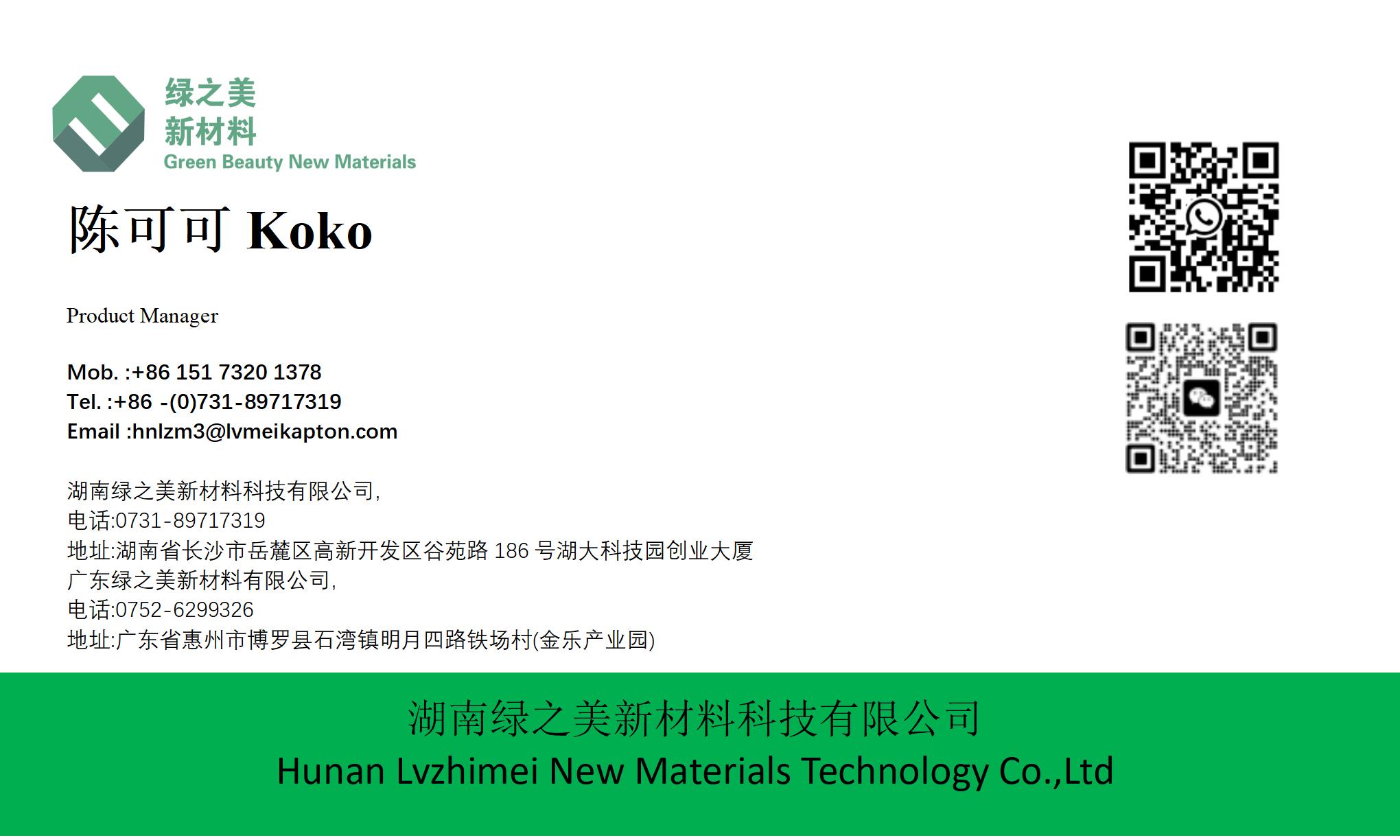



How to Choose the Right Gold Finger Electronics Polyimide Tape Kapton for Your Application?|https://www.lvmeikapton.com/

Tape Type | Continuous Temp (°C) | Peak Temp (°C) | Ideal Use Cases |
PI Material High Temperature Resistant 300 Tape | -269 to +300 | 350 (1 hour) | Engine control units, industrial kilns |
Adhesive PET Material High Temperature Tape | -70 to +150 | 180 (30 mins) | Consumer electronics, LED lighting |
Lvmeikapton Insulating Electrical Tape | -200 to +260 | 300 (2 hours) | Aerospace wiring, cryogenic sensors |
High Surface Energy (≥40 dynes/cm): Metals (copper, aluminum), glass, FR-4 PCBs→ Acrylic adhesives (e.g., "Self-adhesive back blocking spray paint tape") offer superior initial tack (peel strength ≥10 N/cm).
Low Surface Energy (≤30 dynes/cm): PTFE, polypropylene, silicone rubber→ Silicone or fluoropolymer adhesives (e.g., "Lvmeikapton insulating electrical tape") are mandatory; primer coating may be required.
Substrate | Recommended Tape | Adhesive Type | Pre-Application Preparation |
Gold-plated PCB | Brown Circuit Board High Temp Tape | Polyimide-based | Clean with isopropyl alcohol (IPA) |
Flexible FPC | 25μm Polyimide Film Tape | Silicone adhesive | Ensure surface dryness |
Aluminum Alloy | Adhesive PET Material High Temp Tape | Acrylic adhesive | Remove oxide layer with abrasion |
Low Voltage (≤100V): Standard polyimide tape (40 kV/mm dielectric strength) suffices for wire insulation in consumer electronics.
Medium Voltage (100-500V): "Brown circuit board high temperature tape" (45 kV/mm) is ideal for PCB layer separation in industrial controls.
High Voltage (≥500V): "Lvmeikapton insulating electrical tape" (50 kV/mm, 75μm thickness) is required for EV battery systems and power inverters.
Tensile strength ≥150 MPa (e.g., "Strong adhesion blocking high temp tape" at 180 MPa)
Tear resistance ≥30 N/mm (compared to PET tape’s 15 N/mm)
Peel strength retention >80% after 1,000 hours at target temperature
Chemical | Polyimide Tape Performance | PET Tape Performance |
30% Sulfuric Acid | No swelling after 24 hours at 60°C | Adhesive dissolution in 3 hours |
Salt Spray (5% NaCl) | <1% corrosion under tape after 1,000 hours | >50% corrosion at edges |
Isopropyl Alcohol | No adhesive degradation after 1,000 wipes | Film erosion after 500 wipes |
Outdoor Applications: UV-stabilized polyimide tapes (e.g., "Adhesive PET material high temperature tape" with UV additive) last 10+ years in QUV testing, vs. 2 years for non-stabilized alternatives.
Nuclear Environments: Only polyimide tape withstands >10^6 Gy radiation, making it mandatory for reactor monitoring systems, where PVC tapes fail at 10^4 Gy.
Key Features: 25μm polyimide film, silicone adhesive, UL 510 V-0 rating
Ideal For: Masking gold fingers during wave soldering (260°C peak), ensuring 0.2mm precision for high-density connectors
Process Tip: Use die-cut versions with ±5μm tolerance for automated placement in high-volume PCB lines
Technical Edge: Crosslinked silicone adhesive maintains 85% bond strength after 5,000 cycles of -40°C to +250°C
Application Example: Insulating busbars in EV battery management systems (BMS), where 400V+ voltages and 120°C heat require both electrical and thermal protection
Unique Advantage: 12μm ultra-thin film with low outgassing (<0.1% CVCM), critical for cleanroom environments
Case Study: A leading foundry used this tape to protect MEMS sensors during plasma etching, achieving a 99.8% yield improvement by preventing chemical overspray damage
Application | Key Requirements | Recommended Tape |
Engine Bay Wiring | 150°C continuous, 20G vibration | PI Material High Temp 300 Tape |
BMS Cell Insulation | 120°C, chemical resistance | Lvmeikapton Insulating Tape |
Interior Electronics | 80°C, cost-effectiveness | Adhesive PET Material Tape |
Application | Key Requirements | Recommended Tape |
Avionics Cables | -55°C to +125°C, radiation | Lvmeikapton Insulating Tape |
Satellite PCBs | Low outgassing, space vacuum | Brown Circuit Board High Temp Tape |
Ruggedized Computers | Mechanical shock resistance | Strong Adhesion Blocking Tape |
Application | Key Requirements | Recommended Tape |
Wireless Earbuds | Conformability, low thickness | Self-Adhesive Back Blocking Tape |
Laptop Motherboards | No-residue removal, 100°C | 12μm Polyimide Film Tape |
Smartwatch Batteries | Flexibility, body heat tolerance | Adhesive PET Material Tape |
Thermal Conductivity: Lower values (0.15 W/m·K for polyimide vs. 0.22 for PET) are better for heat-sensitive components
Outgassing: For space applications, ensure TML ≤1.0% and CVCM ≤0.1% (per ASTM E595)
Flame Rating: UL 94 V-0 is required for most electronic assemblies; check tape thickness compliance
Thermal Cycling: -40°C to +200°C, 10 cycles/day for 1 week
Humidity Testing: 85% RH at 85°C for 1,000 hours (per IPC-TM-650)
Vibration Testing: 10-2000 Hz, 3G rms for 24 hours (per SAE J1455)
PCB Manufacturing: IPC-4555 for masking tape precision
Medical Devices: ISO 10993 for biocompatibility (e.g., "Lvmeikapton insulating tape" with silicone adhesive)
Consumer Electronics: RoHS/REACH for restricted substances
Nanocomposite Tapes: Graphene-reinforced polyimide tapes offer 20% higher thermal conductivity, ideal for 5G power amplifiers
AI-Powered Selection Tools: Algorithms that recommend tapes based on CAD models, thermal simulations, and failure history
Sustainable Formulations: Water-based adhesives and recyclable polyimide films gaining traction in consumer electronics






